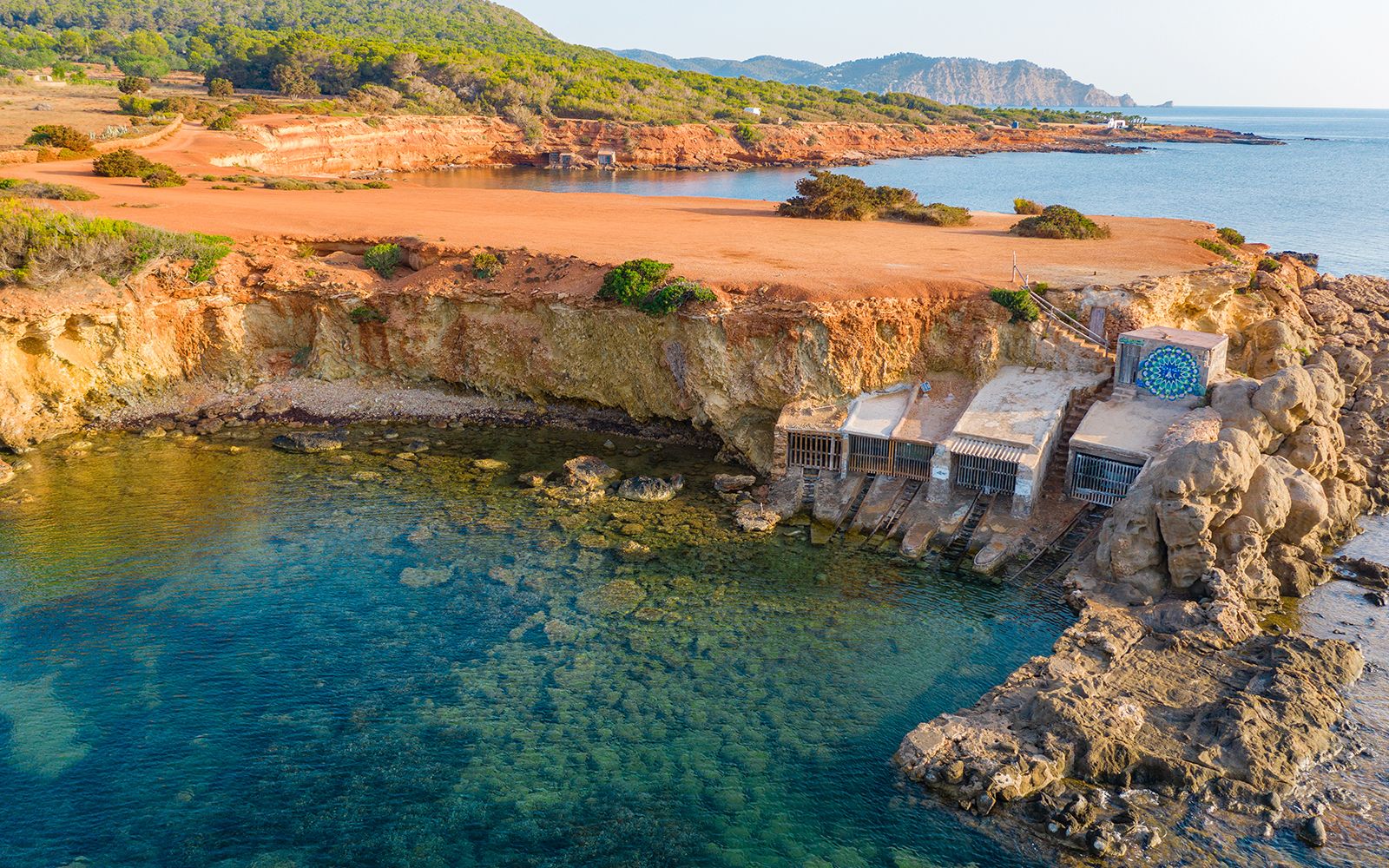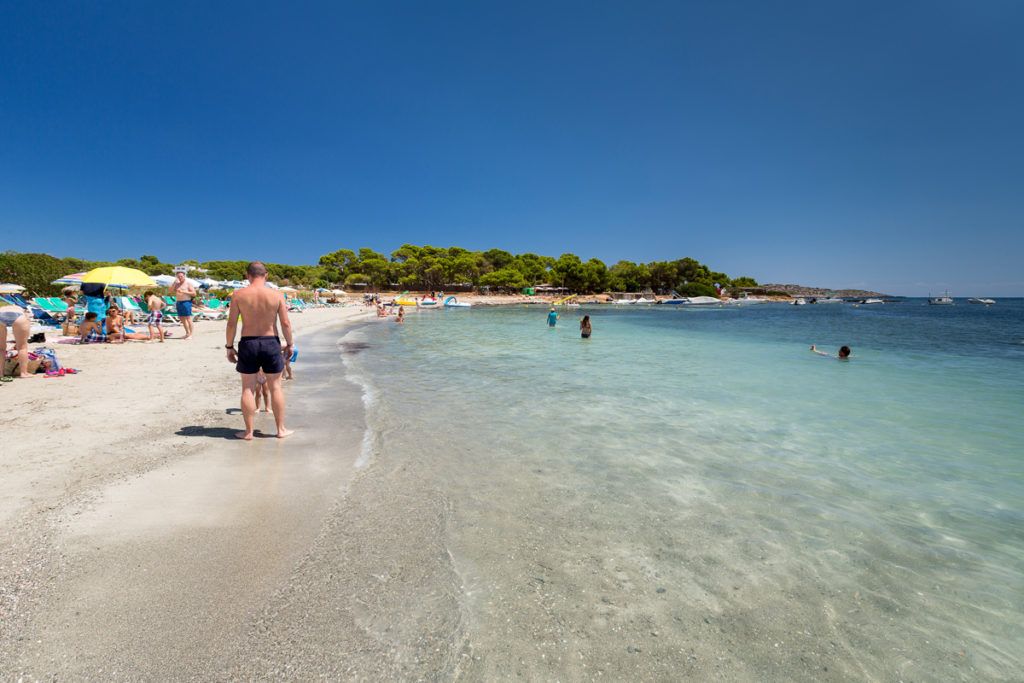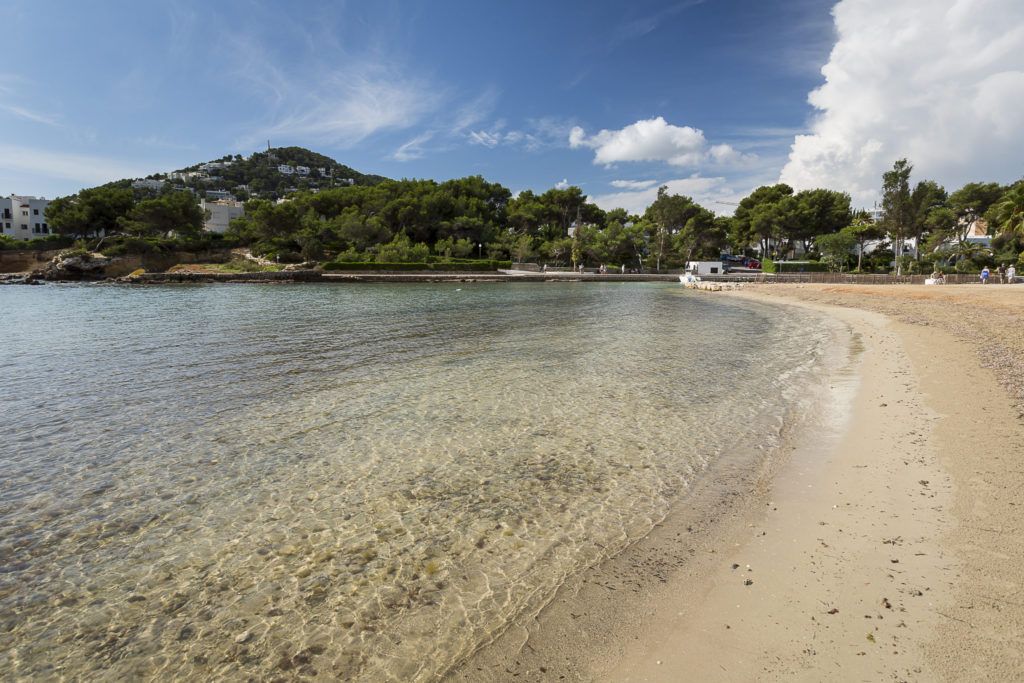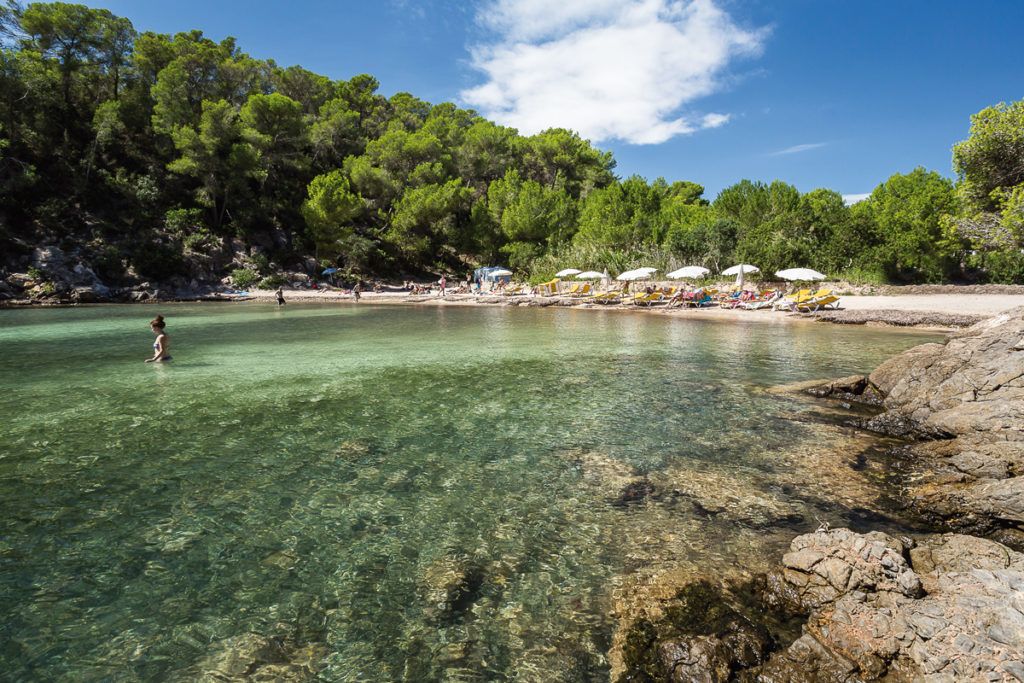Canal d'en Martí

Atzaró Fountain is eleven kilometres away from a small natural port called canal d’en Martí, located next to Punta d’en Valls. This natural harbour has been used since Antiquity to shelter the boats of local fishermen, although its easy accessibility also allowed Barbary pirates to disembark when they came ashore to plunder salt, provisions and jewels.
In addition to the characteristic boathouses that line this charming inlet, canal d’en Martí has also provided us with archaeological finds thanks to the visible remains of seashells, which you will notice piled up on the red earth just to the right of the cove. These accumulations of sea snails from the Murex brandaris (or spiny dye-murex) and the Murex trunculus species remind us that, during Ibiza’s Roman period, the island enjoyed an important level of commerce based on the extraction of purple dye.
This pigment, so sought after in Antiquity, was obtained from a gland found in the snails. It actually became more expensive than gold given that 9,000 snails had to be opened in order to obtain just one gram of purple dye. It was for this reason that the use of this colour was restricted during much of history to kings, nobles and high clergy.
Curiosities
Legend has it that the purple dye industry originated in the city of Tyre (Lebanon) when, one fine day, the Phoenician god Melkart was strolling by the seashore with the nymph Tyrus at his side. Along the way, a dog walking with them bit into a snail and its mouth immediately turned purple. The nymph Tyrus became so captivated by the deep hue she told Melkart she would not become his lover until he presented her with a dress of the same colour.







